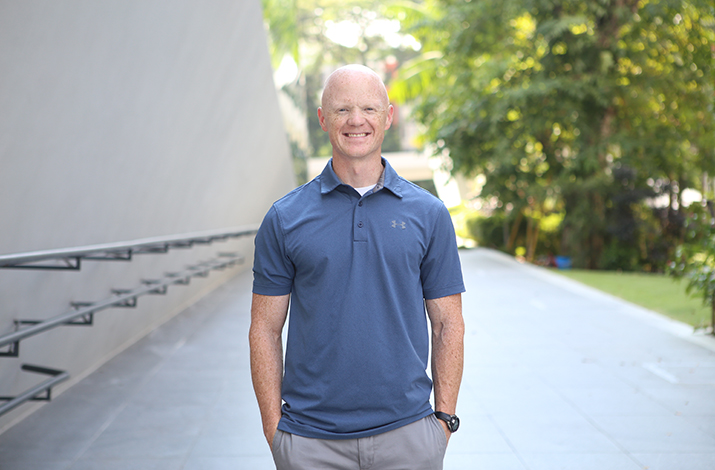Become a fat burner

Becoming a fat burner!
The body uses two primary fuels for energy: fat and glucose. I elaborated previously (see “The case against metabolic rate”) on the value of shifting the body’s metabolic use more towards fat. This is a follow-up, in a way, to that line of thinking by exploring some of the process that’s involved in gearing up your body’s ability to burn fat.
To lose fat mass, we need to both break down fat and burn it—this overall process then is really a conversation between our fat cells and our muscle cells. By mass, our muscles generally constitute the main tissue in the body. Accordingly, they represent an important part of the metabolic demands in the body—if the muscles are working, they become the main driver of the increased metabolic rate in the body. And muscles love using fat as a fuel.
Breaking down stored fat
The first step in this process of enabling the body to burn fat better occurs in the fat cell; we need to activate a series of enzymes that allow a fat cell to break down its stored fat, a process called lipolysis. These enzymes are all called “lipase” enzymes—a simple term that refers to breaking down fat. These enzymes don’t really need to be “turned on” as much as they need to be allowed to act; this involves removing a signal that’s constantly pressing on the brakes. Of all the signals that are trying to “turn off” lipolysis, the hormone insulin is the primary antagonist. Insulin powerfully inhibits this process (1).
The relevance of insulin in this process cannot be overstated—if insulin stays high, lipolysis is turned off; if insulin is low, lipolysis is turned on (2). This is very likely why a low-carbohydrate diet, which lowers insulin better than other diets (3), results in accelerated lipolysis (4).
Burning fat
Once fat has been released from our fat cells, we need to use it. This is where the muscle becomes very important.
When fat is released from fat cells, it is pulled into muscle by the actions of a “doorway” on muscle cells called the fatty acid transporters (or FATs). These FATs are generally always active, pulling fats from the blood into the muscle cells. However, once in the muscle, these fats have two routes they can take—burned for energy or again stored as fat. Naturally, for long-term fat loss, we want the muscles to burn fat, rather than simply store it again.
There are actually two factors involved in the degree to which a muscle burns fat for fuel: insulin and glucose. The direct role of insulin on muscle fat burning is a bit convoluted—in general, insulin stimulates FATs to pull fat from the blood into the muscle. However, once in the muscle, insulin turns down fat burning, favoring fat storage instead (5). This is compounded by glucose.
Glucose is an important player in this process. Of course, blood glucose is a main driver of insulin levels—when glucose is elevated, insulin will be, as well. Independent of insulin, when glucose is coming into the muscle cells, it’s also turning off fat burning. In fact, the glucose essentially out-competes fat for burning (6).
Take-away thoughts
This all plays out just as you might expect. If a diet is based primarily on frequent carbohydrate consumption (i.e., the average diet around the world), the combination of consistently elevated insulin and glucose results in lower fat breakdown and burning, instead favoring glucose burning (4, 7). In contrast, by controlling carbohydrates in the diet, with a subsequent reduction in insulin, lipolysis and fat burning are both stimulated, providing an optimal scenario for fat loss (3, 8).
References
1. Chakrabarti P, Kim JY, Singh M, Shin YK, Kim J, Kumbrink J, et al. Insulin inhibits lipolysis in adipocytes via the evolutionarily conserved mTORC1-Egr1-ATGL-mediated pathway. Molecular and cellular biology. 2013;33(18):3659-66.
2. Jensen MD, Caruso M, Heiling V, and Miles JM. Insulin regulation of lipolysis in nondiabetic and IDDM subjects. Diabetes. 1989;38(12):1595-601.
3. Gardner CD, Kiazand A, Alhassan S, Kim S, Stafford RS, Balise RR, et al. Comparison of the Atkins, Zone, Ornish, and LEARN diets for change in weight and related risk factors among overweight premenopausal women: the A TO Z Weight Loss Study: a randomized trial. JAMA : the journal of the American Medical Association. 2007;297(9):969-77.
4. Howe HR, 3rd, Heidal K, Choi MD, Kraus RM, Boyle K, and Hickner RC. Increased adipose tissue lipolysis after a 2-week high-fat diet in sedentary overweight/obese men. Metabolism: clinical and experimental. 2011;60(7):976-81.
5. Dimitriadis G, Mitrou P, Lambadiari V, Maratou E, and Raptis SA. Insulin effects in muscle and adipose tissue. Diabetes research and clinical practice. 2011;93 Suppl 1:S52-9.
6. Sidossis LS, and Wolfe RR. Glucose and insulin-induced inhibition of fatty acid oxidation: the glucose-fatty acid cycle reversed. The American journal of physiology. 1996;270(4 Pt 1):E733-8.
7. Jensen MD. Fatty acid oxidation in human skeletal muscle. The Journal of clinical investigation. 2002;110(11):1607-9.
8. Shai I, Schwarzfuchs D, Henkin Y, Shahar DR, Witkow S, Greenberg I, et al. Weight loss with a low-carbohydrate, Mediterranean, or low-fat diet. The New England journal of medicine. 2008;359(3):229-41.
This article is for informational and educational purposes only. It is not, nor is it intended to be substitute for professional medical advice, diagnosis, or treatment and should never be relied upon for specific medical advice.


















